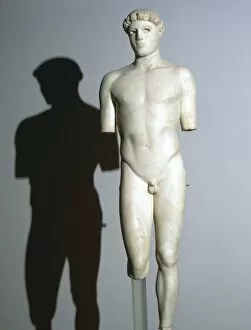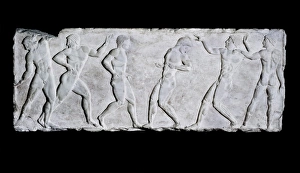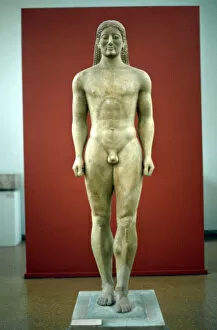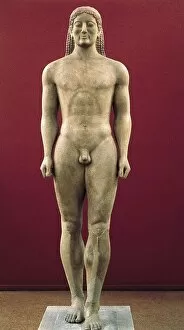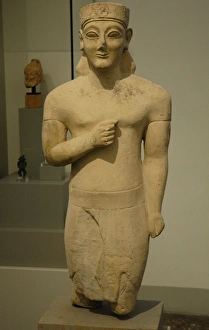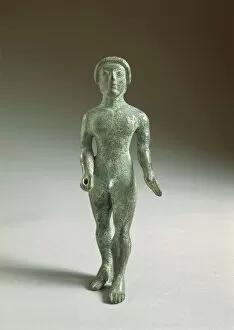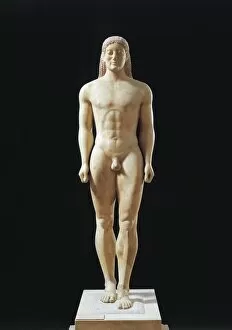Kouros Collection
The kouros, a Greek statue known as the Kritios Boy, originated in the 5th century BC
All Professionally Made to Order for Quick Shipping
The kouros, a Greek statue known as the Kritios Boy, originated in the 5th century BC. Made of marble, it represents a young male figure with its left leg slightly advanced and arms at its sides. This iconic sculpture showcases the transition from rigid Egyptian-style statues to more naturalistic Greek art. Another notable example is the marble statues representing brothers Kleobis and Biton. These sculptures depict two muscular figures standing side by side, showcasing their physical strength and unity as siblings. The base of a funerary kouros with six athletes is another remarkable piece of Greek art. It portrays six athletic figures engaged in various poses, capturing the grace and dynamism of ancient sports competitions. One intriguing kouros comes from Dali in Cyprus dating back to the 6th century BC. This particular artwork reflects the influence of both Greek and Cypriot cultures on artistic expression during that time period. A Roman copy after an original by Polykleitos presents an athlete's body in perfect proportion and balance—a testament to Polykleitos' mastery as a sculptor during his era (fl. c. 450-c). In Cleobis and Biton, painted around 1650 AD on canvas, we see how these ancient sculptures continue to inspire artists throughout history. The Rayet Head is an Attic masterpiece dating back to around 530 BC—its intricate details showcase exceptional craftsmanship while offering insight into ancient Athenian society. From Glanum comes a torso of a young man made from stone—an incomplete yet captivating representation that invites us to imagine what this complete sculpture would have looked like in its prime. Statues of Ramesses II alongside papyrus-bud columns adorn the Peristyle Court—an awe-inspiring sight that exemplifies grandeur and power within Ancient Egyptian culture (1298-32 BC). A nude male torso carved out of marble stands as evidence for our fascination with human anatomy and the pursuit of capturing its beauty through art.

